Observations on London Fashions May 1885
Among the leading ideas in materials, the foremost is stripes, which are seen in all varieties. Striped silks, woolens, velveteens, satins, brocket are all recognized and form most practical wear when tastefully combined with a plain material of the leading color. The stripes may be broad or narrow, according to taste; both are much worn and are equally fashionable.
The more substantial striped material is generally used for the skirt, the body and drapery being made of the plain fabric; but narrow stripes may be arranged for the body and dress draperies as well as for part of the skirt, as shown on 482 Plate 1, and 491 Plate 4.
Others again are not merely composed of two plain stripes, one stripe is plain, the other stripe is made up of a group of smaller ones, almost lines, of different colors, such as blue, green, gold, brown, claret, yellow, etc.
Those fancy stripes have a pretty versatile effect and are especially suited for underskirts. Another useful striped material is of canvas and velvet, very quiet and handsome.
Some of the newest skirts are arranged with horizontal stripes, like 483 on Plate 1 and 491 Plate 4.
Some very excellent things about silk goods have been introduced this season. Several new makes of faille and grosgrain, which are exquisitely soft, and full of the lovely lights and shadows so requisite for draping effects.
Veloutine is the distinctive name of a new make of plain silk, which is very soft and firm, and glossy in appearance, and very satisfactory in wear. It also has the advantage of being noiseless, a very gracious quality when one remembers how often delicate nerves are set on edge by the rustle of a silk dress. Veloutine is manufactured in plain and striped patterns, and bids fair to be the silk of the season.
Some of the new failles (closely woven fabric made from silk, cotton, wool, or synthetic fibers, with a fine, flat crosswise rib. Evening and formal wear) are also made in shot patterns, and these are often used with striped or ribbed velvets or silk corduroy.
Among the very luxurious fabrics, which still hold their own, moiré, frisé velvets and brocades are most worn. The pattern of the frisé material stands out like terry cloth raised on a plain ground.
Canvas cloths and canvas grenadines are in high demand, the former for present wear, and the latter for making up the lighter dresses which the coming warm season will inevitably demand.
These materials are also striped with velvet, broché, or satin, and require a certain amount of plain material introduced to form a suitable costume.
For plainer wear, until decidedly warm weather brings in the host of washing materials, we have countless varieties of woolens, from the plain nun's veiling so "distinctly precious" for its draping adaptabilities, to the more luxurious fabrics on which scrolls, leaves, flowers, geometric patterns, heraldic bird, and Griffin, are worked in silk or chenille.
For evening dresses, especially for young ladies, there is nothing prettier (after lace) than the new silk crepe which we mentioned last month, and which is steadily winning its way into favor.
It is wide in width and light in texture, and its pretty crinkled surface has a peculiarly fresh and crisp-looking effect. It can be arranged with almost any material suited for formal wear, such as satin, velvet, broché, striped bengaline, or faille.
The elegant evening dress, 485, on Plate 2, could be produced in white silk crepe, the crimson portion of the toilette being of Veloutine, satin, or velvet.
Our fair readers will find our plates replete with the leading ideas on making up all these new materials.
Plates 1, 2 and 7 show the various modes of using the more luxurious fabrics in costumes suited to day and evening wear, and Plates 8 and 4 give abundant examples how to convert plain silks and plain and figured woolens into quiet and lady-like costumes suited to the season.
Plate 6 has a remarkably elegant selection of mantles, one of which, of the very newest style we have chosen to give for our full-sized pattern.
Plate 8 contains a selection of the newest Parisian millinery.
Among new Spring colors, green is very fashionable and is used in many shades. Apple-green, watercress-green, olive, and bottle green, all have their votaries, but the favorite tone of all is Chartreuse, a pale green, with a delicate yellow tinge. It is instead trying to some complexions, but eminently becoming where it does suit.
In trimmings for dresses and mantles, lace still leads the way. It is used in great abundance, being closely gathered into frills, coquilles, jabots, flounces, and every conceivable arrangement.
It may be of any width, and, we had almost said, of any quality, however, of course it stands to reason that a cheaper lace may be used where a large quantity is required, such as for frills, etc., while an excellent article is fundamentally necessary where it is to be put on plain fabric, as on 482, Plate 1, or 484, plate 2.
The favorite laces of the season are Chantilly, Spanish, Spanish guipure, Danielle de Saxe, Mauresque, and Alençon.
Woolen lace is primarily used for trimming dresses, and also for mantles made of any woolen fabric. It is made in all widths, and in a great variety of patterns.
That used for skirts may even be three-quarters of a yard in width, while the same pattern narrower, is used for the body, draperies, etc. It is sold in all colors, also in black, white, and cream.
Yak lace is also in great request.
The newest ribbons are watered, and these will probably supersede the ottoman ribbons, so long in use for bonnet strings.
Gauze ribbons are also very fashionable. These are generally edged with satin, sometimes they are seen with the old-fashioned "pearl" edge; others are embroidered with flowers in floss silk. Stripes are as observable in ribbons as in dress materials this season.
Description of the Plates of Costumes
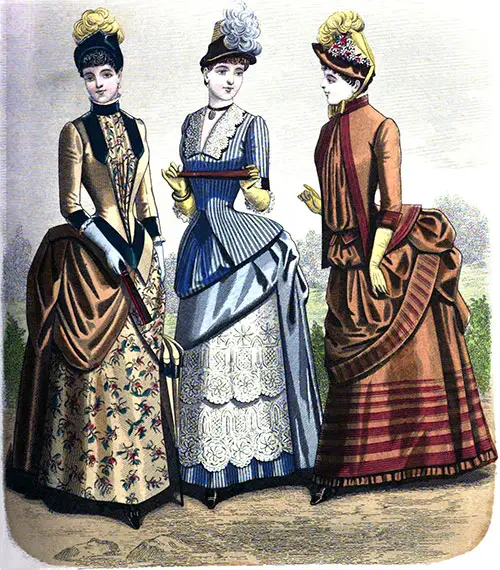
Plate 1: Visiting Costume, Breakfast Party Costume, Morning Promenade Costume
Fig. 1. — (481). — Visiting Costume of mushroom-colored cashmere and broché, trimmed with bias bands of green velvet. The body is made with a deep basque, which is pointed in front and forms two coattails at the back.
A band of green velvet simulates points at the back and front of the blouse. The front of the body is trimmed by a full gilet of broché, which narrows to a point below the waist, and disappears under the pointed velvet band.
This gild is enclosed a short way down the front by two bands of velvet with pointed ends, which start from the neck side of the shoulder seam. The collar and cuffs are of green velvet.
The front draperies of the skirt are arranged en pannier, one being of the cashmere and one of the broché. The back, which falls in deep pleats to the bottom of the skirt, is slightly caught up at about half-way from the waist. The underskirt is quite plain and is made of the broché.
Quantities: — 6 yards of cashmere; 6 yards of broché; 1 yard of velvet on the cross.
Fig. 2. — (482). — Costume for a Breakfast Party or Morning Concert. It is composed of blue satin merveilleux and Pekin and is elegantly arranged with flounces of guipure.
The body of pekin, is cut with a deep basque, which is open from the waist, the opening being filled in with a bouillonné of pekin, ornamented by a diamond shaped piece of dark blue velvet.
This bouillonné is continued on the right side of the skirt to the back drapery. A very small flat gilet of the Pekin fills in the space between the waist and the opening at neck, which is cut with an open V, and finished by a flat trimming of guipure.
The back of the body is of the basque form, the fulness left on at the bottom of back and side seams forming fluted pleats. The sleeves are tight-fitting, of elbow-length, and are finished by bands of dark blue velvet and guipure ruffles.
The draperies of skirt consist of the top bouillonné of Pekin before described and a folded piece of satin merveilleux, which is slightly more full on the left hip, and which crosses the front in a slanting direction to the right side, where it is perfectly plain, and disappears under the back folds.
The back drapery, also of the satin merveilleux, is arranged in waterfall pleats. The front of underskirt is trimmed by two deep flounces of guipure, with scarcely any fulness, and is edged all round by a plissé of the Pekin. The draperies of satin merveilleux cover the back of underskirt.
Quantities: — 5 yards of Satin merveilleux; 8 yards of Pekin; 3 yards of wide guipure; 2 yards of narrow; 1/4 yard of dark blue velvet.
Fig. 3. — (483). — Morning Promenade Costume of Poonah serge of a delicate brown shade arranged with the same material in a red-striped pattern.
The jacket is cut to open from the neck over a full blouse vest in front and is round and rather short at the back. The edges are all finished with the striped material, and the full vest is confined at the waist by tabs of the same.
The front drapery is arranged as a full tablier, edged with a band of the stripe, and is caught up high on each side, disappearing under the back drapery, which falls in a graceful bouffant.
The underskirt, which is quite plain, made of the striped material especially woven in graduated stripes and is edged all around with a piece of plain brown.
Quantities: — 5 yards of Poonah (43 inches wide); 6 yards of striped material.
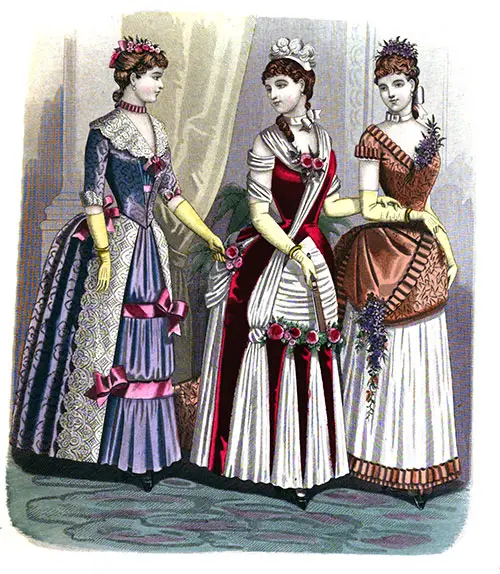
Plate 2: Dinner Dresses
Fig. 1. — (484). — Dinner Dress of heliotrope Veloutine and broché, trimmed with white Spanish lace and pink gauze ribbon. The body of broché is cut open at the neck in front and is also trimmed with a small pleated gilet of the Veloutine crossed by two ribbon tabs.
It has small points at front and back, tight elbow sleeves, and is finished by an open collar and cuffs of lace. The front of the skirt is composed of a full piece of Veloutine, which is rendered bouillonné by two bands of the ribbon ornamented at opposite corners by bows of the same.
From under the lower ribbon band, the Veloutine falls in a flounce. Revere of Spanish lace encloses the front, and the back, which is of the broché, falls in straight pleats. A handsome group of pink bows is placed on the right hip.
Quantities: — 8 yards of broché; 4 yards of Veloutine; 3 1/2 yards of wide lace for revere and collar; 3/8 yard of narrow for sleeves.
Fig. 2. — (485). — Ball or Dinner Dress of white crepe de soie and crimson satin. The low body is of the satin and is cut with long panels at the sides, which fall to the bottom of the skirt, the back forming a short-fluted coattail.
A folded drapery of the crepe ornamented by a spray of roses is arranged on the neck, crosses the front of the body, and is fastened in a small puff halfway down the skirt.
The bodice is without sleeves, the upper part of the arms being draped with folds of the crepe. The front of the skirt is composed of a closely-draped tablier of crepe, edged with a garland of roses and leaves, below which falls a deep flounce of crepe, on which are arranged four pointed pieces of satin.
The back draperies, also of crepe, form a pannier bouffant below the waist, over a straight full skirt of crepe, the center of which is trimmed by a piece of satin to correspond with the side panels.
Quantities: — 10 yards of crepe de soie; 4 yards of satin; 1 garland, and one spray of roses.
For a less expensive toilette, nun's veiling might replace the crepe de soie.
Fig. 3. — (486). — Dinner Dress of chestnut colored poult-de-soie and broché, and white Liberty silk. The broché body is cut open in V shape at neck, both back, and front, the opening, and edges of short sleeves being finished by a fluted ruché of satin ribbon of the same shade of brown.
It is pointed in front, and very short at the back, the train being fastened to it on the outside. The front draperies are short and bouffant, one half being of the plain silk and one of the broché, the latter being edged by the fluted rucking, which is carried round to join the train at the back of the waist.
The train is of the broché, lined with white silk, and edged all round by the fluted ruché. The underskirt is of white silk, fulled merely from the waistband in the "housemaid'' style and finished at the bottom by a plissé of chestnut silk, headed by the satin rucking. The dress is trimmed with bunches of dark lilac.
Quantities: — 12yards of broché; 6 yards of Liberty silk; 12 yards of satin rucking; 3 sprays lilac.
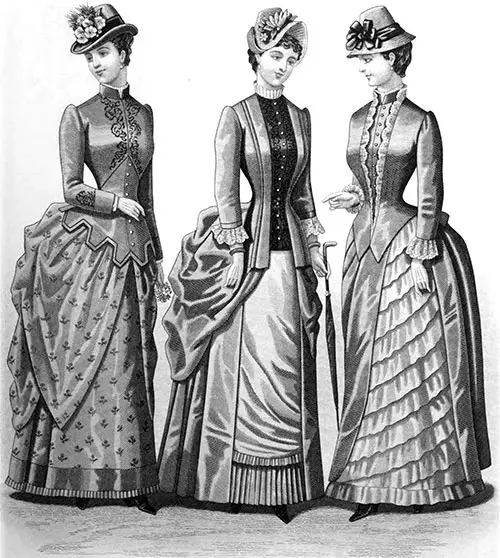
Plate 3: Promenade Costumes and Carriage Dress
Fig. 1. — (487). — Promenade Costume of grey beige embroidered with grey and red flowers, and of plain grey. The body is of the plain material and is cut in a novel style, the upper part imitating a Zouave Jacket.
The bottom edge is cut out in tabs, and the seams of the back are filled in with fan-shaped plissés. The Zouave part of the front is tastefully embroidered with grey and red silk to match the flowers on the skirt, and similar embroidery ornaments the sleeves.
The Zouave closes by invisible hooks and eyes, the vest below being fastened by buttons. The draperies of the skirt are of the embroidered beige and are prettily arranged to form an open tunic with points at sides.
This drapery is put into the waistband with considerable fullness, and the back is also full and flowing, and gracefully draped in a manner for which these soft English woolens are so well adapted.
The underskirt of the embroidered beige is cut plain, finished at the bottom by a straight band and plissé of the plain material.
Quantities: — 9 yards of embroidered beige; 5 yards of plain fabric; 8 buttons.
Fig. 2. — (488). — Promenade Costume of Empress Cashmere of a delicate fawn shade, having a gilet of crimson embroidered satin. The upper part of the dress is of the polonaise form, the back being elegantly draped, and the fronts opening in a tunic.
The gilet is enclosed by double folds of the cashmere, which start from the neck part of the shoulder seam, and are carried below the waist. The underskirt is composed of large pleats all around, except at the front, where a plain narrow breadth is slightly fulled in, giving the side pleats the appearance of panels.
This front breadth is edged at the bottom by a wide and narrow plissé of cashmere.
Quantities: — 10 yards of Empress cashmere (46 inches wide); 3/4 yard of embroidered satin; 13 buttons.
Fig. 3. — (489). — Carriage Dress of olive green cashmere with gilet and flounces of silk of a paler shade. The body, of cashmere, is cut with two rather deep points in front, and forms a coat-tail at the back, over which the pouf (a bouffant or fluffy part of a garment or accessory) of back drapery is fastened.
The silk gilet fastens by silk buttons to match and is enclosed by a frill of white lace, which is continued around the neck. Lace ruffles finish the coat sleeves.
The draperies of the skirt are of cashmere and are arranged to show the whole of the left side of the underskirt, which is covered diagonally with twelve crossway narrow silk flounces. Great care should be taken not to make these flounces too full; else the effect is destroyed.
The cashmere drapery of right side is pleated into the waist and falls straight on the underskirt. The back is similarly arranged, in box pleats, a full appearance being given below the basque by a giant pouf of the cashmere. A narrow crossway flounce finishes the bottom of the skirt.
Quantities: — 8 yards of cashmere; 6 yards of silk; 3 yards of lace; 12 buttons.
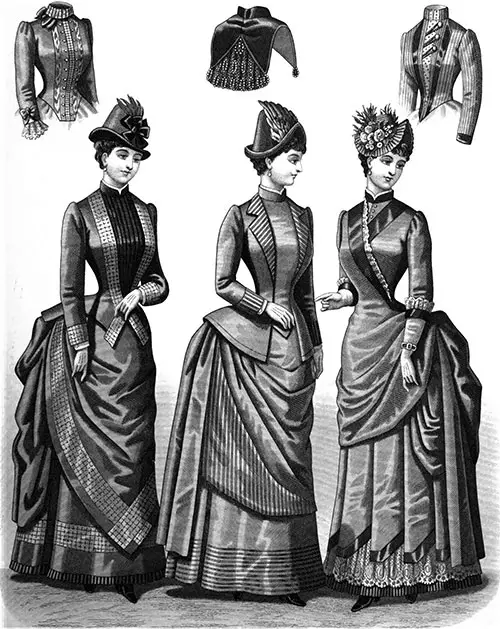
Plate 4: Promenade and Visiting Costumes and Walking Dress
Two Dress bodices and one Collarette head this Plate.
- Dress Bodice of satin or velvet, trimmed with bands of silk embroidery, finished by lace collar, cuffs, and ribbon bows.
- Collarette of satin or plush, trimmed with Spanish or Chantilly lace.
- Pointed Dress Bodice of Pekin, with gilet of spotted silk and plain satin revert. The upper part of gilet is crossed by fancy loops of silk cord attached to large buttons.
Fig. 1. — (490). — Promenade Costume of brown crepe da luine, trimmed with bands of plaid. The corsage is cut with basques which are open in front slightly below the waist and have pleats at the back arranged like a coattail.
The gilet is pleated and comes in a point to the waist. It is enclosed by a band of the plaid, which goes around the neck, and down each front, appearing to cross at the waist. Plaid cuffs finish the sleeves.
The drapery of front is arranged shawl-fashion and trimmed by a band of plaid. The back gracefully draped, is slightly more full. The under-skirt is quite plain and is trimmed by a band of plaid, a plissé finishing the extreme edge.
Quantities: — 14 yards of crepe de luine; 3 yards of plaid.
Fig, 2. — (491). — Walking Dress of plain and striped mohair. The corsage with deep basques opens on a plain gilet, which is fastened, either by buttons at the bank or by invisible hooks and eyes at one side.
The gilet is pointed in front and has an upright collar; the body has revers and cuffs of the stripe and is cut quite round at the back; the center seam overlaps at the bottom and is finished by three buttons.
The front drapery is of the plain mohair, lined with the stripe; the right side is cut much longer than the left, to turn the striped side outer most, carrying the end up to the waist under the basque.
The back is arranged with a bouffant and waterfall drapery. The underskirt is of the plain mohair, with a broad band of the stripe at the edge.
Quantities: — 10 yards of plain mohair; 5 yards of striped.
Fig. 3. — (492). — Visiting Costume of navy blue Veloutine, trimmed with satin bands. The polonaise crosses from right shoulder to left lip, to which point both back and front are draped, and from which also starts a short round drapery, which falls on the underskirt between the front and back.
The fulness of back of polonaise starts at the back seam of the waist and is arranged in a bouffant over waterfall pleats. The front of polonaise is trimmed by a band of satin which starts from the shoulder seam and crossing a small gilt; it narrows to a point on the left hip.
This band is edged at one side with lace. The sleeves of elbow length are finished by a band of satin and a frill of lace. The front of underskirt is laid in deep ornamental pleats, edged with satin. Below these pleats is sewn a flounce of lace over a satin plissé.
Quantities: — 14yards of Veloutine; 3 yards of satin on the cross; 3 yards of lace; 6 buttons.
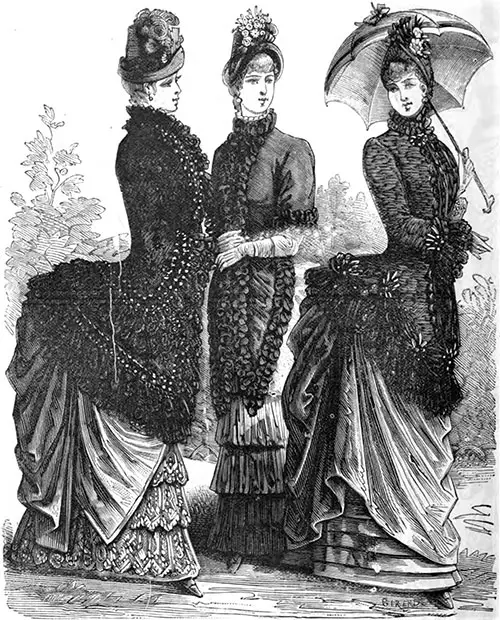
Plate 6: Elegant Visiting Costume and Mantelet
Fig. 1. — (C 162). — Elegant Visiting Costume made of velours frisé and trimmed with jet passementerie and Spanish lace. It is longer in front than at the back, and the sleeve portion of the garment is cut square.
Quantities: — 7 yards of velours frisé; 8 yards of passementerie; 18 yards of lace.
Fig. 2. — (C 163). —The Mignon Mantelet of silk or poplin, trimmed with silk rûching. It is cut like a shoulder cape with slightly raised shoulders and has long pointed ends in front.
Quantities: — 2 1/2 yards of silk; 5 1/5 yards of silk rûching.
We give the pattern full-sized with our present No.
The Chignon Mantelet. (C 163.)
The pattern chosen for presentation this month to our fair subscribers is that of the new and elegant Mantelet shown on the second figure of our sixth plate. It is so simple as to require little or no explanation for making up, being cut all in one piece from the material, if of wide width, or with a seam down the center of the back if made of narrow-width material.
The shoulder-seams are joined together with the round of shoulder-piece, in the usual way of making up a Dolman or Visiting, and there is a small degree of fulness allowed at this part. This pattern will be found most useful for making up summer Mantelets of any material.
Fig. 3 — (C 164). — Elegant Visiting Jacket of watered poplin or Indian fabric. It is cut to be tight-fitting, short at the back and long in front, and has a silk gilet of blouse form extending the whole of the front. The skirt forms scallops at the sides and the whole garment is handsomely trimmed with chenille fringe and jet ornaments.
Quantities: — 5 yards of poplin; 1 yard of satin; 3 yards of chenille fringe; 12 jet ornaments.
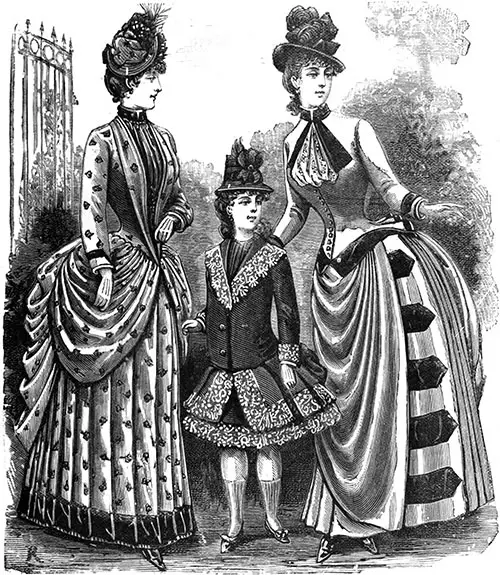
Plate 7: Two Costumes and Visiting Dress
Fig. 1. — (493). — Costume for the Park of cream foulard with crimson flowers. The body is pointed and trimmed with a foulard drapery and a gilet of crimson satin.
The overskirt is arranged en pannier and sewn to the edge of the bodice. The underskirt is laid in pleats and edged at the bottom by a band of crimson satin.
Quantities: — 14 yards of foulard; 3 yards of satin.
Fig. 2. — (J 155). — Costume of sage-green plush and Mauresque lace for a young lady of 10. It is of blouse shape, having an under gilet of pleated silk to match, Revers of plush edged with lace.
The dress is finished at the bottom by a full pleated flounce over a plain one; the upper one is open in front, and both are trimmed with the lace. There is a small bouffant at the back.
Quantities: — 6 yards of plush; 12 yards of Mauresque lace; 4 large buttons.
Fig. 3. — (404). — Visiting Dress for half-mourning made of grey canvas de laine, and trimmed with black velvet. The body is elegantly cut with a point in front, to which is sewn a short basque of black velvet, which disappears under the pleated coat-tail at the back.
The front of the bodice is finished by a small loose gilet of grey embroidered silk and revers of black velvet. The skirt is elegantly draped, in long and full folds in front, and has a bouffant at the back falling over deep pleats. The side panel is trimmed with five-pointed tabs of black velvet.
Quantities: — 15 yards of canvas de laine; 1 1/2 yards of velvet; 1/2 yard of embroidered silk for the gilet.
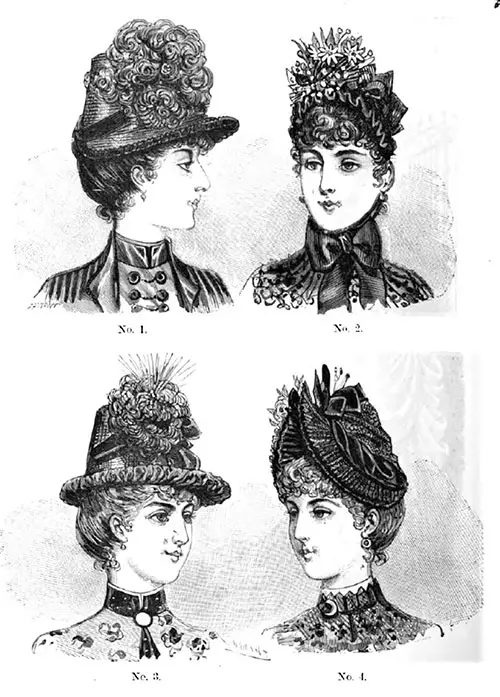
Plate 8: Parisian Hats and Bonnets.
No. 1. — High-crowned Hat of olive green fancy straw, the brim turned up at the back, bound and lined with olive-green velvet. Hand of olive-green velvet, and a large bunch of curled ostrich tips of various shades of green.
No. 2. — Bonnet of black basket-work, with bows of heliotrope ottoman ribbon, and a bunch of mauves shaded flowers. There are also strings of wide ottoman ribbon.
No. 3. — Hat of black straw, the brim lined with black satin, and trimmed with bows of black velvet and a large aigrette of shaded brown and gold.
No. 4. — Olivia Bonnet for Mourning of black lace, trimmed with black gauze ribbon, white rose-sprays, and a black jet and feather aigrette.
"Observations on London Fashions," and "Description of the Plates of Costumes," in London and Paris Ladies Magazine of Fashion, Literature and Fine Arts, London: Kent & Co. Vol. 58, No 653, May 1885, p. 1-5.
Editor's Note: Some terminology used in the description of women's clothing during the 1800s and early 1900s has been changed to reflect more modern terms. For example, a women's "Toilette" -- a form of costume or outfit has an entirely different common meaning in the 21st century. Typical terms applied to "toilette" include outfit, ensemble, or costume, depending on context.
Note: We have edited this text to correct grammatical errors and improve word choice to clarify the article for today’s readers. Changes made are typically minor, and we often left passive text “as is.” Those who need to quote the article directly should verify any changes by reviewing the original material.

